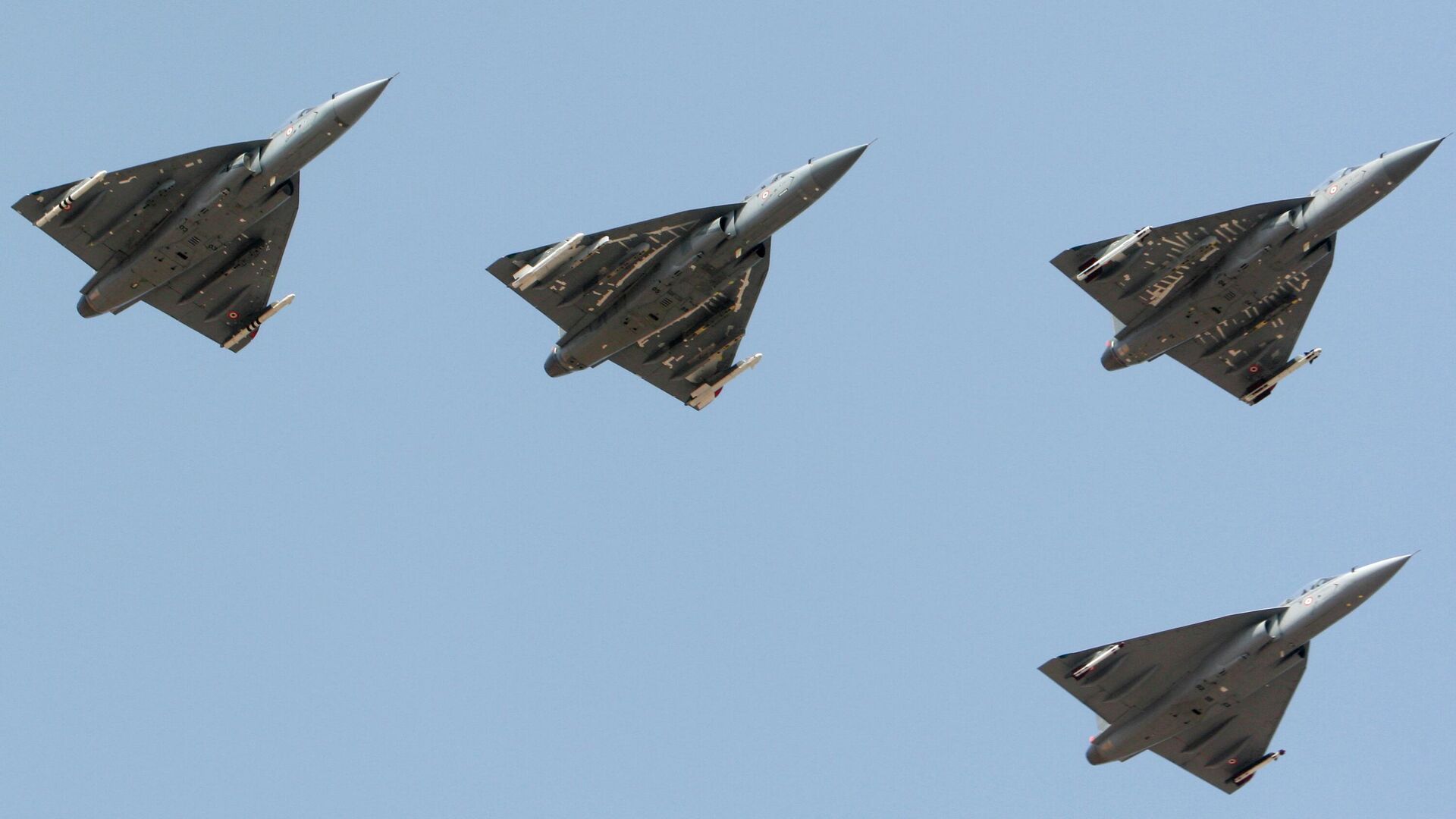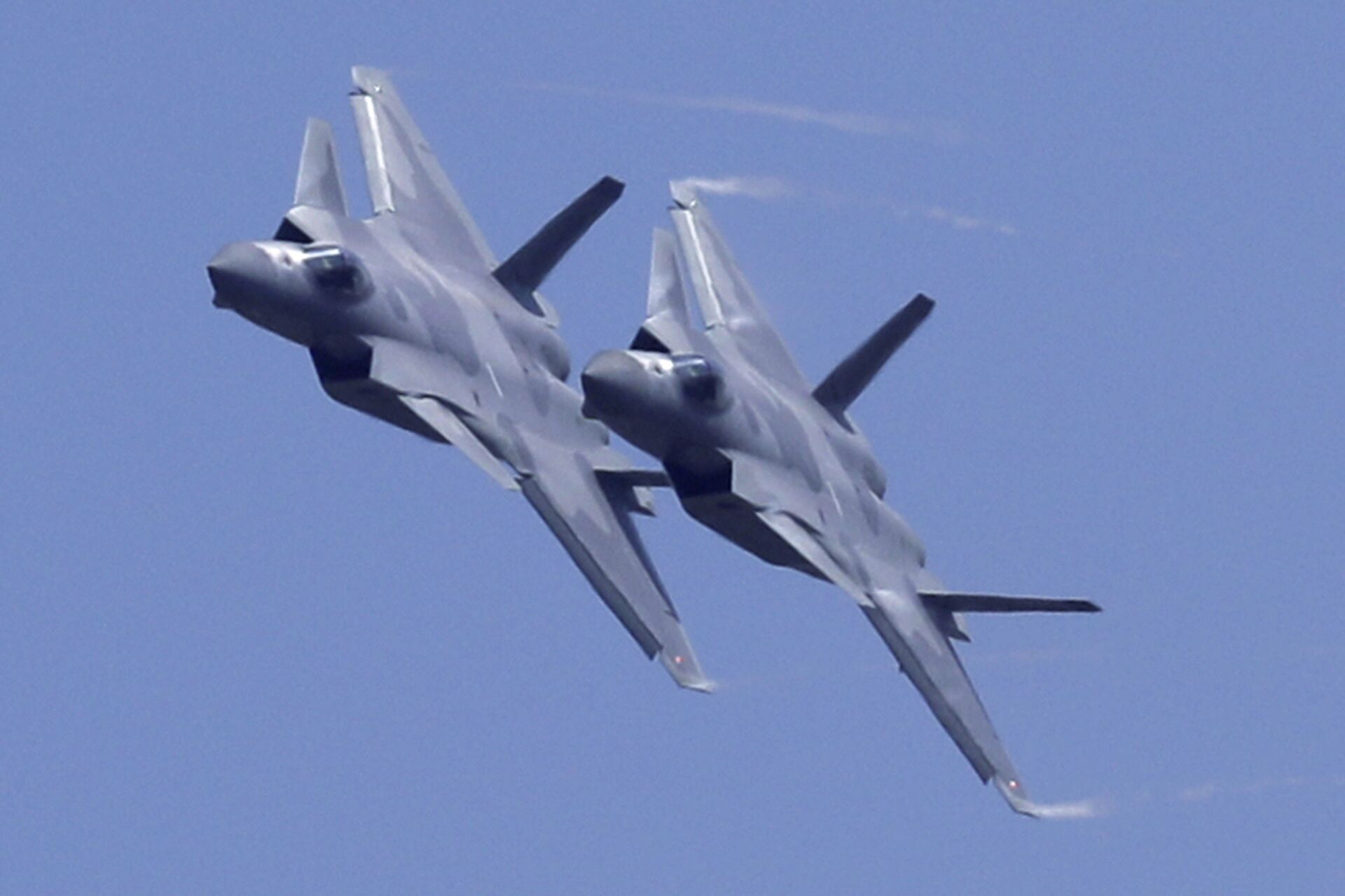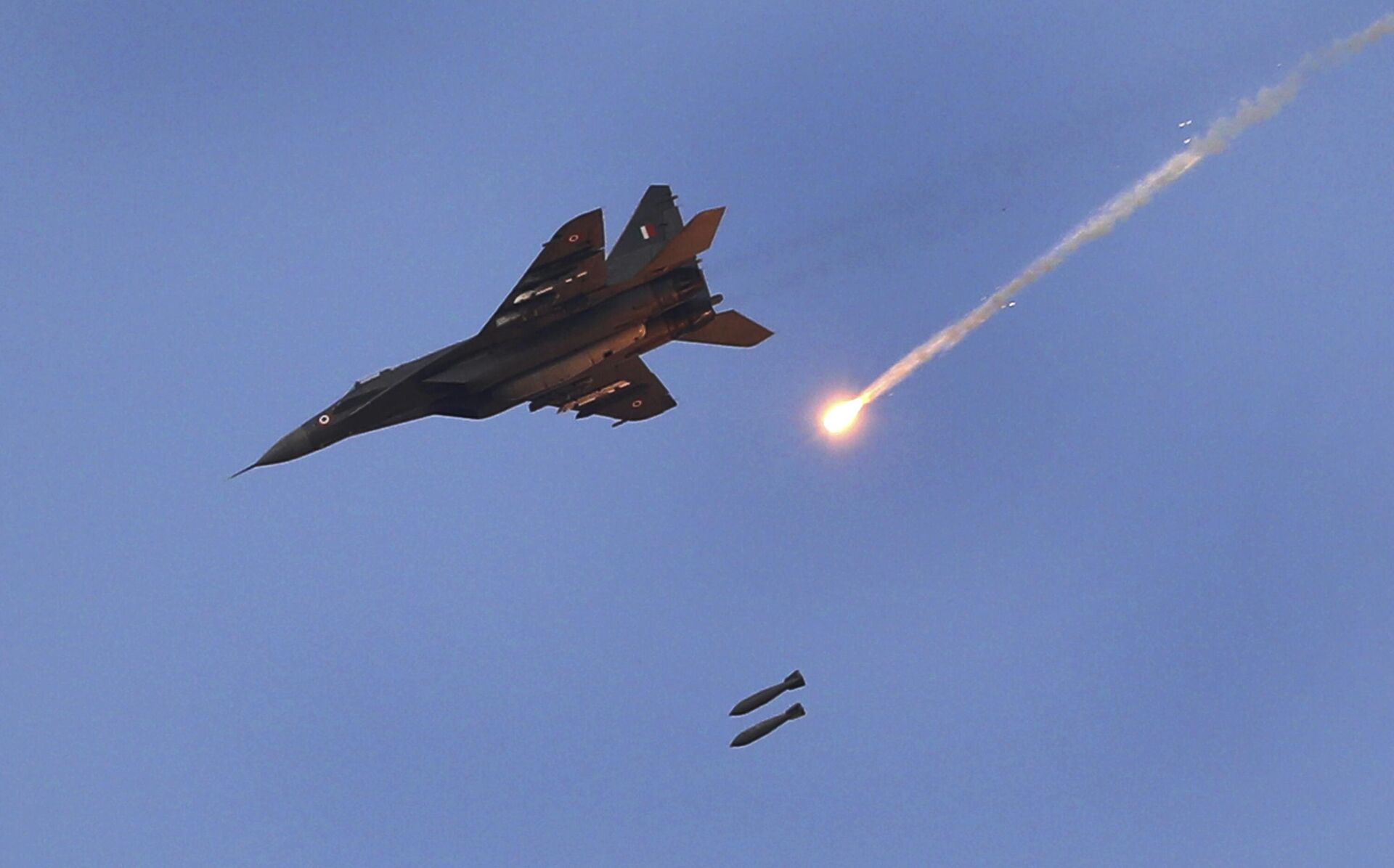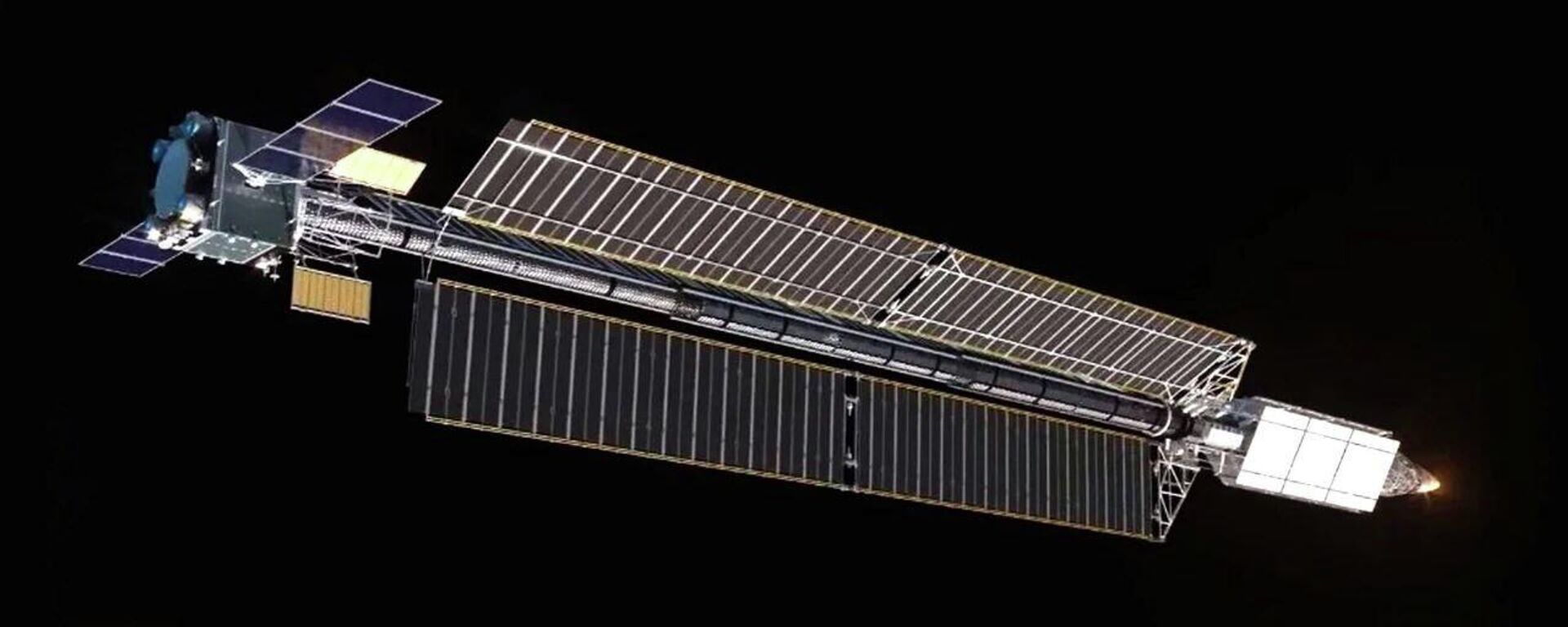Ominous Emerging Stealth Gap in IAF Operational Capability Needs Urgent Plugging

© AP Photo / Aijaz Rahi
Subscribe
Indian military analyst Vijainder K Thakur reviews the air force's capability in the region in his column for Sputnik India.
The rapid build up of the PLAAF's Chengdu J-20 stealth fighter bomber inventory and the PAF's plan to acquire the Chinese Shenyang J-31 stealth fighter in large numbers, are likely to create an operational gap in the IAF's capability to safeguard Indian air space.
China's J-20 Stealth Fighter Production Ramp Up
Since December 2021, when Chengdu announced commencement of large-scale serial production of the J-20, the People’s Liberation Army (PLA) Air Force (PLAAF) has rapidly built up its inventory of the stealth fighter bomber.
According to internet reports, the number of J-20 manufactured increased from around 150 in August 2022 to 208 in November 2023. Analysts suggest the production rate may have reached 100 aircraft per year in 2023 and could stabilise at 120 aircraft in 2025.
In comparison, the annual production rate for the Lockheed Martin F-35 is 156 aircraft. However, while Lockheed's annual production number is catering to the world market, Chengdu's production is dedicated to the PLAAF.
The PLAAF had reportedly deployed eight brigades of J-20 fighters by the end of 2022 and an additional five in 2023. The number of aircraft in a PLAAF brigade can vary from 20 to 40. In other words, the PLAAF has operationally deployed at least 260 J-20 fighters already.

Two J-20 stealth fighter jets of the Chinese People's Liberation Army (PLA) Air Force performs during the 12th China International Aviation and Aerospace Exhibition, also known as Airshow China 2018, Tuesday, Nov. 6, 2018, in Zhuhai city, south China's Guangdong province
© AP Photo / Kin Cheung
PAF Acquisition of J-31 Fighters
In January 2024, PAF's Air Chief Marshal Zaheer Ahmed Baber Sidhu stated that the "foundation for acquiring the J-31 stealth fighter aircraft has already been laid," and it's set to become part of the PAF's fleet "in the near future."
Since the J-31 entered flight testing in 2012, at least two, and possibly more, prototypes of the J-31 have participated in the flight testing program. The design of the J-31 has been tweaked iteratively to accommodate its new radar and engine, as well as to improve airframe stealth.
The last design change was noticed in 2018 during Zhuhai Airshow where the aircraft featured a noticeably different engine inlet design compared to earlier versions.
Shenyang Aircraft Corporation has officially confirmed that the J-31 will feature Guizhou WS-19 turbofan engine, which has a maximum thrust of 12 tonnes-force (117.7 kN), compared to the original WS-13 whose thrust is 9 tonnes-force (88.3 kN) with afterburner.
It is highly likely that the design of the fighter has now been frozen and flight testing has validated basic flight and stealth characteristics of the aircraft.
The fact that the PAF has committed to the acquisition of the platform would indicate that the sensor suite comprising an AESA radar, EO targeting system and other EO and passive radar sensors have been integrated with the aircraft's mission computer and sensor fusion capable cockpit MFDs.
It's likely that the stealth fighter will incorporate PAF specific requirements. While these are being implemented, integration of weapon systems under development for internal carriage will be progressed.
Factoring in all that is known about the development status of the aircraft, it's likely that the PAF could sign a firm contract for acquiring around 25 to 30 J-31s within 2 years.
The Looming Stealth Gap
By the year 2030, it is highly likely that the PLAAF would be in a position to field 600 J-20 stealth fighter bombers and the PAF, around 100 J-31 stealth fighters.
In stark contrast, the IAF would have no stealth fighters in its inventory by that time. At best, the IAF would have placed a highly speculative order for the still in development AMCA fighter. In past fighter aircraft development projects (LCA Tejas, LCA Mk-1A), DRDO/HAL have always grievously breached the timelines projected in such speculative orders.
It's important to understand how India's deterrence could be badly compromised by the looming stealth gap.

rocket test launch
© AP Photo / Manish Swarup
The Stealth Threat
Stealth fighters have a much smaller radar cross section (RCS) than non stealth fighters. Since fighter detection and tracking is radar based, the reduced RCS of a stealth fighter degrades the air defence capability of the adversary. Radar detection range of stealth fighters is significantly lower than non stealth fighters. The range for obtaining a weapon grade track on a stealth fighter is proportionately even lesser.
When operating against stealth fighters, the performance of Air Defence (AD) systems, whether based on the ground (ground radar and missile systems) or airborne (AWACS and air-to-air missile armed fighters), degrades.
Here it is important to understand that the extent of the degradation varies with the effectiveness of the stealth shaping; but there is always a degradation. The effectiveness of a stealthy fighter should never be evaluated purely on its reduced RCS. It has to be evaluated on a combination of the reduced RCS and the range of weapons that it employs. A less stealthy fighter can use longer range stealthy missiles to strike at its target without detection. In other words, it can be as stealthy as a 0.0 RCS stealth fighter!
China is known to have developed air-to-air and air-to-ground missiles that will allow the J-20 and J-31 to launch their weapons before they can be effectively tracked on IAF radars.
As such, under no circumstances can we dismiss the threat from PLAAF and PAF stealth fighters on the grounds that they are not as stealthy as US stealth fighters or India's yet on the drawing board, AMCA.
India's Options
India's AMCA program will not start adding stealth fighters to IAF inventory before 2035. It may be noted that many analysts are sceptical of the projected timeline. Operational induction takes around 10 years from first flight and AMCA first flight is unlikely before 2029.
India has two options to plug the emerging stealth gap.
Counter Stealth Capability
One option would be to start acquiring counter stealth capability. However, radar stealth is not easily countered. Counters do exist, but they are long term solutions that require heavy investments.
The counters are:
Increasing radiated power VHF/UHF Stealth Early Warning Radars Multi-band radars Counter Stealth Radars Using HF Over the Horizon (OTH) radars Networking and Data fusion Passive Detection of electromagnetic emissions.
Improved E/O sensors
Multi-band Counter Stealth Radar Of the above, Multi-band counter stealth radar is an affordable option that the IAF could deploy in the timeframe available. The Russian Nebo(Sky)-M 55Zh6M mobile radar complex is an example of an operationally mature multi-band radar that can detect stealth fighters.
The Nebo-M comprises three truck-mounted radar systems, all of them - AESAs:
VHF band RLM-M
UHF band RLM-D
S/X band RLM-S
The principle behind Nebo-M is the fusion of data from the three radars to generate a weapon grade track. The VHF system performs initial detection and cues the UHF radar, which in turn can cue the X-band RLM-S.
According to Aviation Week, the higher-frequency radars are more accurate than VHF, and can concentrate energy on a target to make successful detection and tracking more likely. Using “stop and stare” modes, where the antenna rotation stops and the radar scans electronically over a 90-deg. sector, puts four times as much energy on target as continuous rotation and increases range by 40%.
The Nebo-M can be integrated with the IAF'S S-400 squadrons as well as the IACCS (Integrated Air Command and Control System) Interim Stealth Fighter.

A view shows S-400 Triumph missile air defence systems at the Russian Northern Fleet's base of Gadzhiyevo in Murmansk region, Russia
© Sputnik / Pavel Lvov
/ The second option for India to counter the stealth threat would be for the IAF to deploy its own lightweight stealth fighter before the stealth gap assumes dangerous proportions.
Just as the Chinese are pitching their J-31 stealth fighter primarily for exports, Russia too is developing its Su-75 Checkmate single engine light stealth fighter primarily for exports.
Russia has stated that it's open to JV manufacturing of the Su-75 in a partner country. Such a JV would be in perfect alignment with India's Make-in-India and Atmanirbharta paradigms.
Besides plugging the emerging stealth gap, local manufacture of the Su-75 in India could generate billions in exports as has been the case with the Brahmos missile, and may well be the case with the Su-30MKI modernisation program.
India's manufacture of the Su-75 would in no way compromise its AMCA program. The AMCA is a twin engine medium weight stealth fighter, whereas the Su-75 is a single engine lightweight stealth fighter.
A single engine fighter performs a different role than a twin engine fighter; it is cheaper to acquire and operate. The Su-75 will remain relevant to the IAF's operational needs well after the IAF starts to induct the AMCA.
Conclusion
Both India's neighbours - China and Pakistan - are now fully invested in stealth fighters. The rate at which the PLAAF is building its J-20 inventory and Pakistan's decision to procure the J-31 stealth fighter from China should alert our defence planners to the build up of a perfect storm around the 2030 period, when the lack of stealth fighters in IAF inventory could lead to a deterrence breakdown.
In the past, the PAF has displayed a proclivity to exploit any gaps in the IAFs operational capability. Pakistan's post Balakot Operation Swift Resort hinged on skillfully exploiting the operational gap in the IAF's long range air-to-air missile capability.
It's important that India not tempt the PAF with yet another operational gap. The best and most robust way to dissuade PAF or PLAAF adventurism would be to field either our own stealth fighters or a credible counter stealth capability.

